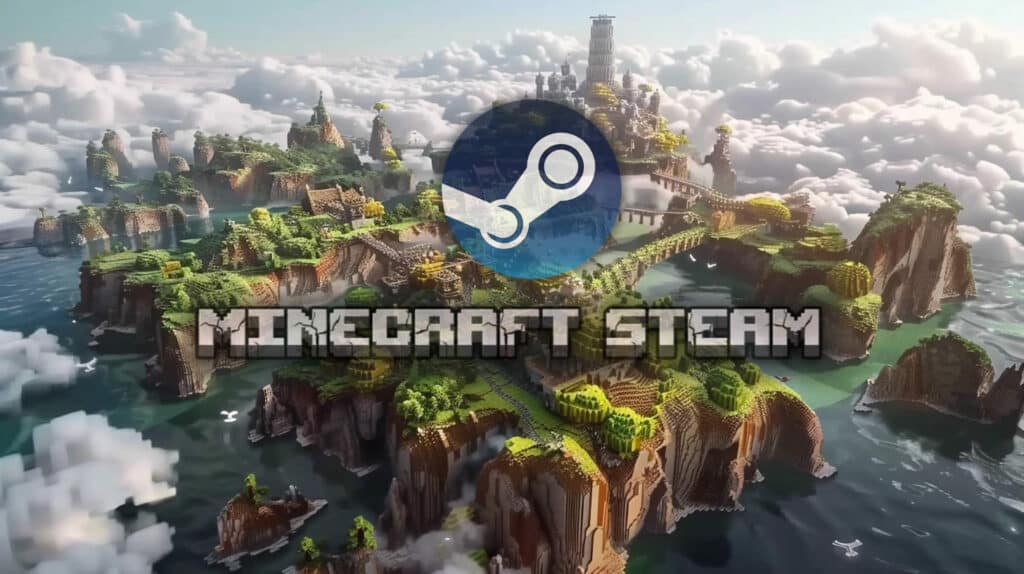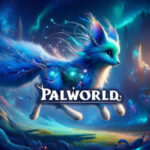Minecraft is not just a game; it’s a global phenomenon that has redefined the boundaries of interactive entertainment. Since its initial release in 2009, it has grown into a colossal force in the gaming world, captivating millions with its simple yet profoundly versatile gameplay. At its core, Minecraft is a sandbox game that offers players an expansive world to explore, modify, and create, unfettered by specific goals or narratives. This freedom has ignited the creativity of players of all ages, leading to the construction of everything from simple cottages to sprawling cities, complex machines, and even functioning computers within the game’s blocky realms.
The cultural impact of Minecraft is vast and varied. It has been used as an educational tool to teach subjects ranging from mathematics and physics to history and computer programming. The game has also found applications in professional fields; urban planners and architects have used its intuitive design interface for city planning and building designs. Minecraft’s influence extends into popular culture, inspiring a plethora of merchandise, spin-off games, books, and even a feature film in development.
Despite its ubiquity, Minecraft remains conspicuously absent from Steam, the leading digital distribution platform for PC gaming. This absence is not due to oversight or technical incompatibility but is a deliberate choice by Mojang Studios and its parent company, Microsoft. The game’s absence on Steam sparks considerable curiosity and speculation among gamers and industry observers alike. It raises questions about the strategic considerations behind game distribution decisions and the broader implications for Minecraft’s development and its community.
This deliberate distancing from Steam highlights a strategic divergence in the distribution and monetization strategies of one of the world’s most beloved games. It underlines a significant shift in the gaming industry, where control over distribution channels, direct engagement with the community, and integration within broader ecosystems are increasingly prioritized by major players. The decision encapsulates the complexities of modern game publishing, where visibility, revenue sharing, platform control, and user experience are carefully weighed.
Here, we will delve deeper into the reasons behind why Minecraft is not listed on Steam, exploring the pros and cons of this strategic decision and its impact on the game’s popularity and ongoing development. We’ll examine how this decision fits into the broader context of Minecraft’s history, particularly the pivotal moment of its acquisition by Microsoft, and how it aligns with the tech giant’s strategic objectives in the gaming and digital content domains.

History of Minecraft
Initial Development and Evolution
Minecraft’s journey from a one-man project to a global phenomenon is a testament to the power of creative freedom and community engagement in the digital age. The game’s origins trace back to 2009, when Swedish programmer Markus Persson, known as Notch, began work on what he envisioned as a dynamic, block-based building game. Drawing inspiration from games like Dwarf Fortress, Infiniminer, and RollerCoaster Tycoon, Persson sought to create a game that offered players complete freedom to shape their environment. The first public version, released in May 2009, captured the imagination of a small but growing community of players, whose feedback became integral to the game’s development.
As Minecraft’s popularity soared, it underwent continuous evolution, with updates that introduced new gameplay elements, block types, and mechanics, shaping it into the rich, expansive experience it is today. This iterative development process, closely aligned with community feedback, became a hallmark of Minecraft’s evolution, fostering a deep sense of ownership and investment among its player base.
Mojang’s Philosophy and Early Distribution Strategy
The success of Minecraft led to the formal establishment of Mojang, the studio founded by Notch and a few collaborators, to continue the game’s development and manage its growing community. Mojang’s philosophy was grounded in a commitment to creative freedom, both for its developers and its players. The studio maintained an open dialogue with the Minecraft community, frequently incorporating player suggestions into game updates and fostering a vibrant modding scene that significantly expanded the game’s possibilities.
Mojang’s distribution strategy for Minecraft was as unconventional as the game itself. Initially, Minecraft was sold directly from Mojang’s website, bypassing traditional retail and digital distribution channels. This approach allowed Mojang to retain full control over sales and updates, ensuring a direct line to their players and fostering a strong community around the game.
The Microsoft Takeover
Timeline and Details of the Acquisition
In 2014, the landscape of Minecraft changed dramatically with the news that Microsoft would acquire Mojang for a staggering $2.5 billion. This move came after Notch expressed a desire to step back from the overwhelming responsibility of managing such a successful title. The acquisition, completed in November of that year, was one of the most significant transactions in gaming history, reflecting the immense value and potential Microsoft saw in Minecraft.
Changes Post-Acquisition, Including Strategic Decisions
Under Microsoft’s stewardship, Minecraft continued to flourish, with the tech giant bringing resources and expertise that helped scale the game’s development and expand its reach. One of the first major changes was the expansion of Minecraft to new platforms, including Windows 10, Xbox, and eventually, virtual reality and education-focused versions.
Microsoft’s strategic decisions also involved tightening the integration between Minecraft and its other products and services, leveraging the game’s massive user base to bolster its broader ecosystem. This included introducing Minecraft to its game subscription service, Xbox Game Pass, and integrating Minecraft with Microsoft-owned services like Azure for hosting Minecraft servers and GitHub for managing community contributions to the game’s codebase.
However, one strategic decision that stood out was the choice to keep Minecraft off Steam, a move that underscored Microsoft’s desire for direct control over the game’s distribution and its intent to integrate Minecraft more closely with its ecosystem, rather than sharing revenue or relinquishing any control to third-party platforms. This decision was emblematic of a broader shift in the gaming industry towards platform exclusivity and ecosystem-centric strategies, reflecting the evolving dynamics of game distribution in the digital age.
Reasons for Minecraft’s Absence on Steam
Business Model and Revenue Sharing
Comparison of Mojang/Microsoft and Steam’s Business Models
The business models of Mojang (and by extension, Microsoft) and Steam (operated by Valve Corporation) represent fundamentally different approaches to game distribution and monetization. Mojang, even before the Microsoft acquisition, favored direct sales through its website, a strategy that allowed it to retain full revenue from each sale, fostering a direct financial relationship with its players. This model aligns closely with Microsoft’s broader strategy for its digital products, emphasizing direct sales channels where possible to maximize revenue and control.
In contrast, Steam operates on a revenue-sharing model, where developers and publishers list their games on the platform in exchange for a portion of the sales revenue, with Valve taking a cut. While the exact percentage varies, the standard cut has historically been around 30%, a significant share that developers and publishers must factor into their financial planning.
Financial Implications of Steam’s Revenue Share Policy
For a game as successful as Minecraft, the financial implications of Steam’s revenue share policy are substantial. By avoiding the platform, Microsoft circumvents the 30% cut, ensuring that all revenue generated from Minecraft sales goes directly into its coffers. This decision, while potentially limiting exposure to Steam’s vast user base, ensures a significantly higher profit margin, a crucial factor for a game that continues to sell millions of copies each year.
 Platform Control and Ecosystem
Platform Control and Ecosystem
The Desire for Direct Control Over Distribution and Updates
One of the primary reasons for Minecraft’s absence on Steam is Microsoft’s desire for direct control over the game’s distribution and updates. This control allows for immediate deployment of updates, direct management of game versions, and a streamlined process for introducing new features or content. Such direct control is particularly important for a game like Minecraft, which has a rapid update cycle and a strong emphasis on community input.
Integration with Microsoft’s Ecosystem and Services
Further, keeping Minecraft off Steam allows Microsoft to more tightly integrate the game with its own ecosystem and services, including Xbox Live, the Windows Store, and Microsoft’s cloud services. This integration supports cross-platform play, enhances security with Xbox Live’s robust infrastructure, and offers potential synergies with other Microsoft products and services, contributing to a more cohesive user experience across the Microsoft ecosystem.
User Experience and Community Engagement
Customization and Modding Community Considerations
Minecraft’s modding community is vast, driving much of the game’s longevity and appeal. By maintaining control over the game’s distribution, Microsoft can better support this community, ensuring that mods remain compatible with the game’s core and that the modding ecosystem thrives. Platforms like Steam, while supportive of modding, introduce an additional layer of complexity in managing and distributing mods, potentially complicating the relationship between the game, its mods, and the players.
Direct Communication Channels with the Player Base
Direct distribution also means direct communication with the player base, a critical component of Minecraft’s development philosophy. This direct line allows for more effective collection of player feedback, quicker response to community concerns, and a more personal relationship between the developers and the community. It supports a level of engagement and responsiveness that might be diluted on a platform like Steam, where communication is often mediated through the platform’s own systems and forums.
In summary, the strategic decision to keep Minecraft off Steam is driven by a combination of financial considerations, the desire for direct control over the game’s ecosystem, and a commitment to maintaining a close, direct relationship with the community. This approach reflects broader trends in the gaming industry towards platform exclusivity and the cultivation of proprietary ecosystems, underscoring the strategic value that major players like Microsoft place on direct engagement and control.
Pros of Minecraft Not Being on Steam
Increased Profit Margins
One of the most straightforward advantages of Minecraft’s absence from Steam is the significant increase in profit margins for Microsoft. Steam, as the dominant digital distribution platform for PC games, typically takes a cut of 30% from each game sale. This revenue-sharing model, while standard across many digital storefronts, can significantly impact the profitability of high-selling games like Minecraft. By choosing to distribute Minecraft directly through its own platforms, Microsoft circumvents this fee, ensuring that the entirety of each sale contributes to its revenue.
This approach has profound implications for a game as perennially popular as Minecraft. With over 200 million copies sold and a player base that spans the globe, even a single-digit percentage increase in profit per sale represents a substantial financial boon for Microsoft. The avoidance of Steam’s cut thus directly translates into enhanced profitability, providing Microsoft with a larger pool of resources to reinvest in Minecraft’s development, marketing, and expansion.
Moreover, this financial model aligns with Microsoft’s broader strategic objectives. As a tech giant with a diverse portfolio of products and services, Microsoft benefits from the direct sales model’s simplicity and efficiency. The increased profit margins from Minecraft sales bolster Microsoft’s gaming division and contribute to the company’s overall financial health, supporting its ability to innovate and compete in various technology sectors.
Brand and Ecosystem Synergy
The decision to keep Minecraft off Steam also plays a crucial role in reinforcing the synergy between the Minecraft brand and Microsoft’s broader gaming ecosystem. Minecraft is more than just a game; it’s a cultural phenomenon with a dedicated global community. This community, and the game itself, are integral parts of Microsoft’s gaming strategy, serving as a flagship title that draws players into Microsoft’s ecosystem.
By controlling Minecraft’s distribution, Microsoft can ensure that the game serves as a gateway to other services and products within its ecosystem. Players who come for Minecraft are introduced to Microsoft’s broader suite of offerings, from the Windows operating system to the Xbox gaming platform and even to educational tools like Minecraft: Education Edition. This seamless integration across Microsoft’s products creates a cohesive user experience, encouraging players to explore other Microsoft services and strengthening their loyalty to the Microsoft brand.
Furthermore, Minecraft’s direct distribution allows Microsoft to leverage the game in strategic ways that would be more challenging on a third-party platform like Steam. For example, Microsoft can bundle Minecraft with hardware products, offer it as part of subscription services like Xbox Game Pass, or use it to promote cross-platform play features. These strategies not only enhance the value proposition of Microsoft’s offerings but also deepen the integration of Minecraft within the Microsoft ecosystem, creating a virtuous cycle that benefits both the game and the broader range of Microsoft products and services.
The synergy between Minecraft and Microsoft’s ecosystem is also evident in the technical and social infrastructure that supports the game. Minecraft’s integration with Xbox Live, for example, provides players with a robust multiplayer experience, complete with secure login, friends lists, and parental controls. This integration exemplifies how Minecraft complements and is complemented by Microsoft’s ecosystem, creating a richer, more connected gaming experience that extends beyond the game itself.
In conclusion, the strategic decision to exclude Minecraft from Steam has several key benefits for Microsoft. The increased profit margins resulting from direct sales support the financial health of both the Minecraft franchise and Microsoft’s gaming division. At the same time, the close alignment between Minecraft and Microsoft’s broader ecosystem enhances the brand’s value and encourages player engagement across Microsoft’s range of products and services. This synergy not only reinforces the strength of the Minecraft brand but also supports Microsoft’s strategic objectives in the gaming industry and beyond, illustrating the multifaceted benefits of this distribution strategy.
Cross-promotion with Other Microsoft Services and Games
Minecraft’s direct distribution through Microsoft’s channels enables strategic cross-promotion opportunities with other Microsoft services and games, which is instrumental in enhancing the user experience and broadening the game’s appeal. For instance, Minecraft can be bundled with Xbox consoles or offered at a discount to Xbox Game Pass subscribers, encouraging Minecraft players to explore other aspects of the Microsoft gaming ecosystem. Similarly, features like Minecraft Realms, the game’s subscription-based private server service, leverage Azure’s cloud capabilities, showcasing Microsoft’s technological prowess and encouraging players to engage with its cloud services.
These cross-promotion strategies not only increase the visibility of Microsoft’s other products and services among Minecraft’s vast user base but also add value to the Minecraft experience itself. By integrating with and promoting other Microsoft games and services, Minecraft becomes a central piece in a larger puzzle, contributing to a more cohesive and engaging Microsoft ecosystem. This not only benefits players, who receive a more enriched gaming experience, but also bolsters the overall health and competitiveness of Microsoft’s gaming division.
Direct Customer Relationship
Greater Control Over Customer Data and Interaction
By managing Minecraft’s distribution directly, Microsoft gains invaluable insights into customer behavior, preferences, and feedback, which can be leveraged to enhance the game and tailor future offerings. Direct distribution channels provide a wealth of data, from purchase patterns to player engagement metrics, allowing Microsoft to make informed decisions about game updates, new features, and community support initiatives. This data-driven approach ensures that Minecraft continues to evolve in ways that resonate with its community, reinforcing player loyalty and engagement.
Moreover, this control over customer data extends beyond Minecraft, providing Microsoft with a broader understanding of its customers’ interests and habits. Such insights are crucial for refining cross-promotion strategies, developing new products, and enhancing existing services across Microsoft’s ecosystem.
Flexibility in Offering Promotions, Updates, and Community Events
Direct control over Minecraft’s distribution affords Microsoft unparalleled flexibility in how it manages the game’s lifecycle. Without the constraints imposed by third-party platforms, Microsoft can swiftly implement updates, launch new content, and address community feedback. This agility is crucial for maintaining player interest and ensuring the game remains fresh and engaging.
Promotional campaigns and community events can be tailored and deployed with greater precision and creativity, directly targeting the most engaged segments of the Minecraft community. Special events, such as anniversary celebrations or themed updates, can be synchronized across Microsoft’s ecosystem, leveraging the company’s broad range of platforms and services to create immersive, cross-platform experiences.
Furthermore, direct distribution facilitates a more personalized approach to promotions and updates. Microsoft can segment its audience based on detailed player data, delivering targeted offers and content that resonate with different player groups. This personalization enhances the player experience, making users feel valued and understood, which is key to fostering a loyal and active community.
In summary, Minecraft’s absence from Steam allows Microsoft to maximize profit margins, enhance the synergy between Minecraft and its broader ecosystem, and maintain a direct and flexible relationship with its players. This strategic approach to distribution supports Microsoft’s broader business objectives, reinforcing the strength of the Minecraft brand and its integral role within the Microsoft ecosystem.
Cons of Minecraft Not Being on Steam
Reduced Visibility and Accessibility
Potential Loss of Exposure to Steam’s Massive User Base
One of the significant drawbacks of Minecraft not being listed on Steam is the potential reduction in visibility and accessibility, especially considering Steam’s vast user base and its role as a central hub for PC gaming. Steam boasts millions of active users, many of whom rely on the platform not just for purchasing games but also for discovering new titles through recommendations, curator lists, and community suggestions. The absence of Minecraft from this expansive marketplace means missing out on an automatic inclusion in the browsing and discovery routines of a large segment of gamers, particularly those who might not actively seek out Minecraft outside of their preferred platform.
This reduced visibility is particularly relevant for newer generations of gamers or those new to PC gaming who might first turn to Steam to build their game libraries. While Minecraft’s popularity and brand recognition mitigate this to some extent, the absence from Steam could slow down its growth potential among these groups, relying instead on word-of-mouth or external marketing efforts to reach this audience.
Missed Steam Community Features
Steam is renowned not just for its extensive game library but also for its robust community features, including forums, user reviews, groups, and workshop support for mods and custom content. These features foster a vibrant community around each game, providing a platform for discussion, support, and creative exchange that can significantly enhance the player experience and engagement.
Minecraft’s absence from Steam means missing out on these built-in community features, which could otherwise serve to enrich the Minecraft community by providing additional spaces for players to share creations, tips, strategies, and modding projects. While Minecraft has a strong community presence on other platforms and forums, Steam’s community features offer a level of integration and convenience that could further bolster community engagement and player-to-player interaction within the game’s ecosystem.
Furthermore, Steam’s user reviews and rating system serve as a powerful discovery tool, helping potential new players gauge a game’s quality and appeal through the experiences of others. Without a presence on Steam, Minecraft lacks access to this form of community-driven promotion, which can be particularly influential among gamers making purchasing decisions.
Lack of Integration with Steam’s Social and Community Features
Steam’s ecosystem is not just about games; it’s also about connecting players through a variety of social features, including friend lists, group chats, and the ability to easily join friends’ games. The platform’s integrated social environment enhances the gaming experience, making it effortless for players to collaborate, compete, and share their in-game experiences. Minecraft’s absence from Steam means it misses out on this seamless social integration, potentially limiting the ease with which players can connect and engage with each other within the game.
While Minecraft has its own systems for multiplayer interaction, the lack of integration with Steam’s established social framework can represent a missed opportunity for fostering deeper community ties and making social interactions more accessible and engaging for players accustomed to Steam’s social features.
Fragmentation and Platform Confusion
Challenges for Players Navigating Multiple Platforms and Stores
Another significant downside to Minecraft not being available on Steam is the potential for fragmentation and confusion among players, particularly those who prefer to centralize their game libraries within a single platform. For many gamers, Steam serves as a one-stop-shop for their gaming needs, offering a unified interface for purchasing, organizing, and launching games. The absence of Minecraft from this unified platform can create a disjointed experience for players who have to navigate between different launchers and stores to access their games.
This fragmentation extends beyond mere inconvenience; it can also lead to confusion regarding where to purchase the game, how to access different versions (such as the Java Edition versus the Bedrock Edition), and how to manage updates and mods. For less tech-savvy players or those new to gaming, these hurdles can be daunting, potentially deterring them from engaging with Minecraft altogether.
Moreover, the need to manage multiple accounts and remember separate login credentials for different platforms can be a significant annoyance, detracting from the seamless gaming experience that many players seek. This fragmentation can also complicate customer support and troubleshooting, as issues may span across multiple platforms and systems, making resolution more complex and time-consuming.
Why Minecraft is not listed on Steam
While Minecraft’s strategic absence from Steam is underpinned by a range of benefits related to profitability, brand synergy, and direct customer relationships, it is not without its drawbacks. Reduced visibility and accessibility, along with missing out on Steam’s community features, represent significant cons that Microsoft must weigh against the strategic advantages of direct distribution. These factors highlight the complex trade-offs involved in platform selection and distribution strategy in the modern gaming landscape.
Minecraft’s conspicuous absence from Steam, the leading platform for PC game distribution, is a strategic decision that underscores the complex interplay between direct control, brand integration, and user engagement in the digital age. This choice reflects a calculated trade-off between the benefits of autonomy and the potential reach offered by Steam’s extensive network.
The Strategic Rationale
The decision to keep Minecraft off Steam is primarily driven by Microsoft’s desire to maintain direct control over the game’s distribution and to fully capitalize on its revenue potential. By bypassing Steam, Microsoft avoids the platform’s standard revenue share model, which typically sees the distributor taking a significant cut from each sale. This direct sales approach not only enhances profit margins but also ensures that Minecraft serves as a linchpin in Microsoft’s broader gaming ecosystem, driving engagement across a range of Microsoft products and services.
Furthermore, direct control over Minecraft allows Microsoft to foster a closer relationship with the game’s community. This direct engagement is crucial for a game like Minecraft, which relies heavily on user feedback and has a vibrant modding community. Microsoft’s approach allows for a more responsive and adaptable development process, tailored promotions, and community events that might be constrained within the framework of a third-party platform like Steam.
The Drawbacks of not being listed on Steam
However, this strategy is not without its drawbacks. Foremost among these is the potential loss of visibility and accessibility that comes with forgoing Steam’s massive user base and its powerful discovery mechanisms. Steam’s recommendation algorithms, community reviews, and forums play a significant role in driving game discovery and engagement, and their absence can limit a game’s exposure to new audiences.
Additionally, Steam offers a suite of community and social features that enhance the player experience, from integrated forums and user reviews to seamless multiplayer connectivity. Minecraft’s absence from Steam means missing out on these built-in community features, which could otherwise serve to enrich the Minecraft community by providing additional spaces for players to share creations, tips, strategies, and modding projects.
Moreover, the decision to exclude Minecraft from Steam can lead to fragmentation and confusion for players accustomed to managing their game libraries within a single platform. This fragmentation can create a disjointed experience for players, complicating the process of purchasing, updating, and engaging with the game, especially for those who might be less tech-savvy or new to gaming.
The Broader Implications
Microsoft’s decision to keep Minecraft off Steam reflects broader trends in the gaming industry, where major players increasingly prioritize direct distribution channels and ecosystem integration. This trend towards platform exclusivity and ecosystem-centric strategies highlights the evolving dynamics of game distribution in the digital era, where control over user experience, data, and revenue streams is paramount.
The choice exemplifies the strategic considerations that game developers and publishers must navigate in distributing their titles. While platforms like Steam offer considerable advantages in terms of reach and community features, the benefits of direct control and integration within a proprietary ecosystem can outweigh these considerations for games with the stature and following of Minecraft.
The fact of the matter is, Minecraft has grown in its own popularity since 2009 and shows absolutely no show of slowing down. With the advent of custom Minecraft mods and custom Minecraft launchers, there’s still no tangible reason for Microsoft to port over to Steam. Maybe in another 15 years time, if Minecraft’s popularity fades, this could be a call to shift over but in the meantime, keep Minecrafting away from Steam.






















